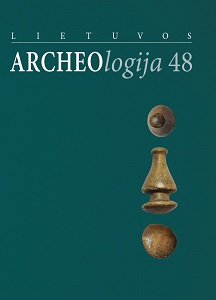TRACES OF CHRISTIAN CULTURAL INFLUENCES IN PAGAN VILNIUS: THE CEMETERY ON BOKŠTO STREET
TRACES OF CHRISTIAN CULTURAL INFLUENCES IN PAGAN VILNIUS: THE CEMETERY ON BOKŠTO STREET
Author(s): Rytis Jonaitis, Irma KaplūnaitėSubject(s): Archaeology, History of Church(es), 13th to 14th Centuries, Eastern Orthodoxy, History of Religion
Published by: Lietuvos istorijos institutas
Keywords: Medieval Vilnius; Christianity; cemetery; cultural influence;
Summary/Abstract: Lithuania was the country to remain pagan longest in Europe, but it was not isolated from the rest of Europe. Although the locals in the late 13th – late 14th centuries were still mostly pagans, Lithuania’s grand dukes appreciated the benefits of Christian immigrants. These Christians brought not only their religion, but also a knowledge of crafts, their culture, and their own traditions. Although Christians, both Catholic and Orthodox, mainly wished to settle in Lithuania for economic reasons rather than from a desire to Christianise it, their presence in pagan Vilnius left traces, one of which, visible archaeologically, is the inhumation cemetery on Bokšto Street, where Orthodox Christians began to bury their dead in the last decades of the 13th century. By supplementing the historical context with this cemetery’s material, it is possible to talk about how the Orthodox community influenced the city’s urban landscape, burial traditions, and crafts.
Journal: Lietuvos archeologija
- Issue Year: 2022
- Issue No: 48
- Page Range: 185-205
- Page Count: 21
- Language: English

